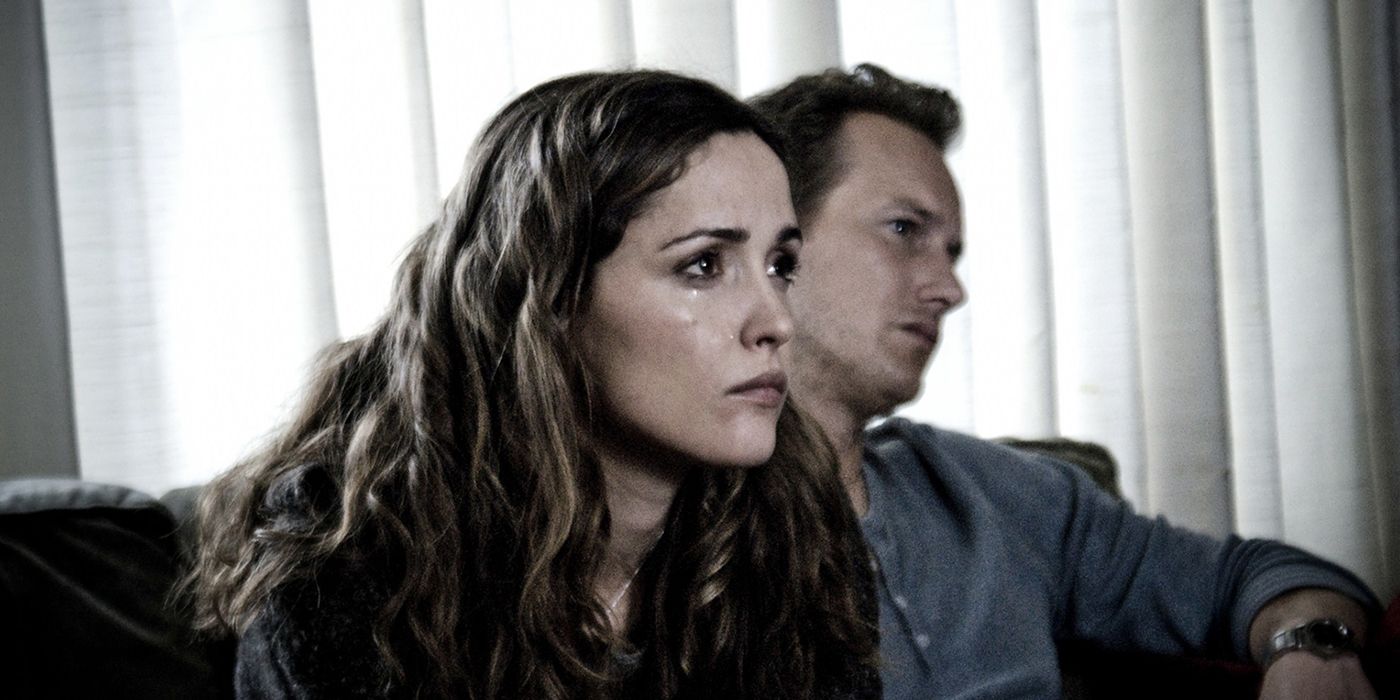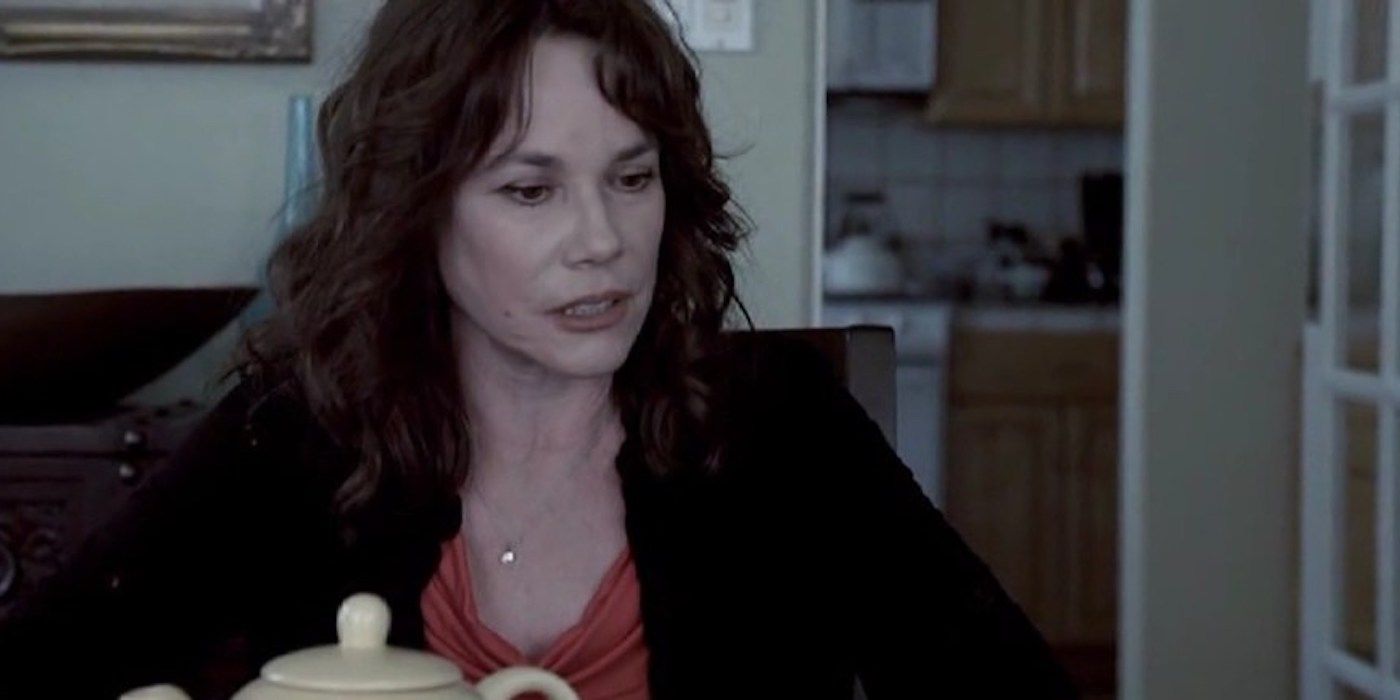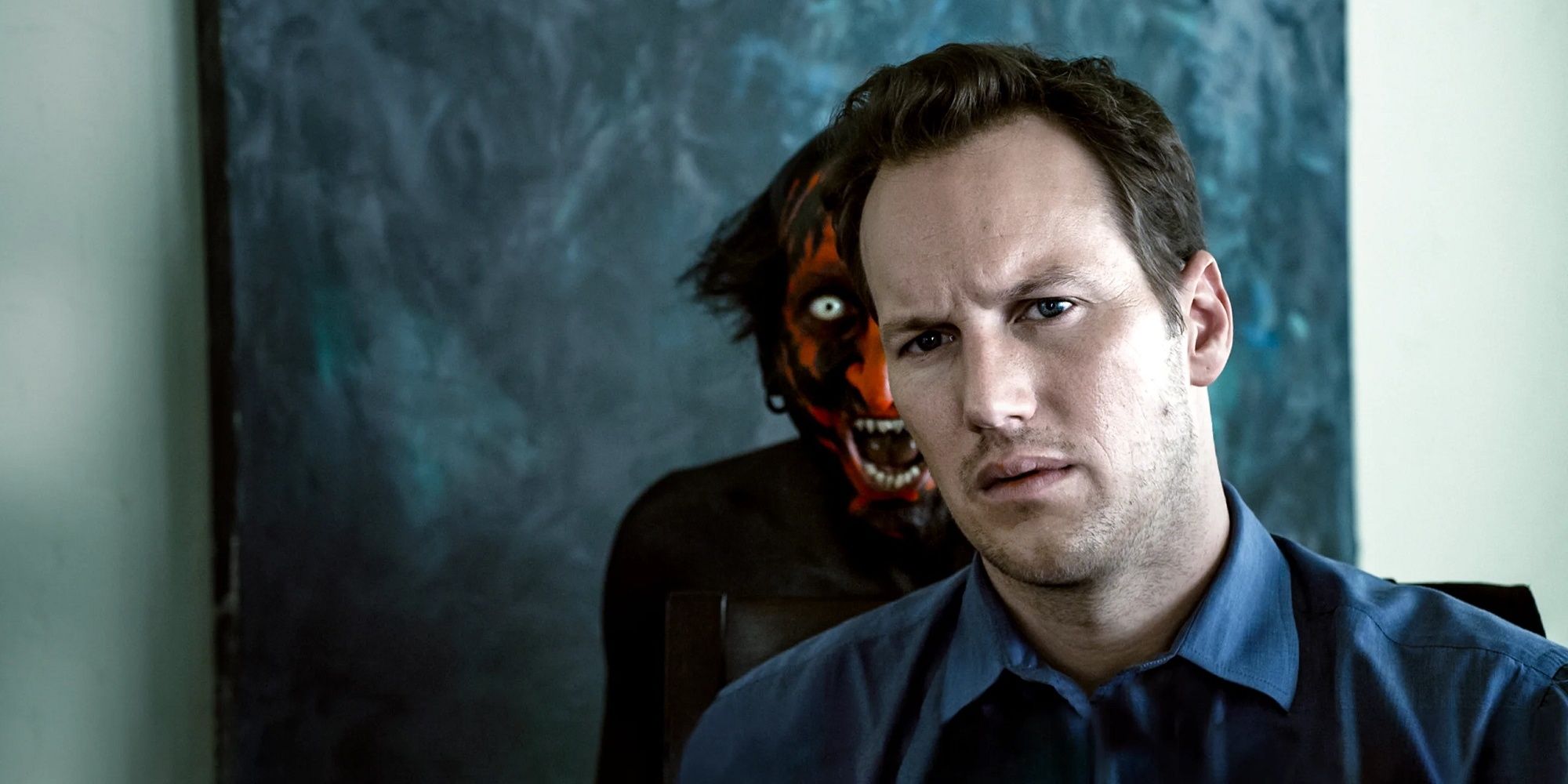One of the most criticized tropes of horror films is the jump scare. It's become a lazy tool in modern horror, a way to make the audience react against their will by causing a physical reaction that isn't true fear but natural instinct. We've all seen it done to death. A character turns a corner and, BAM, suddenly there's a loud beat of music and something is standing in or running across the frame. It could be something non-threatening like a character's friend, it could be the tired leaping cat gimmick, or it could be the monstrous villain itself. Most of the time we recognize it for the cheapness that it is, but sometimes, if done the right way, it can be absolutely chilling. One scientific study actually aimed to find the scariest jump scare ever created. The winner went to an unforgettable moment in the 2011 film Insidious.
A Jump Scare From 'Insidious' Gets the Heart Racing More Than Any Other Movie
The study was developed in 2020 by BroadbandChoices. Titled "The Science of Scare," the project sought to find the scariest movie ever made as well as the scariest jump scare ever made. As they explained, their scientific approach to reach a conclusion was done in this way:
"Our test subjects are invited to special screenings of our movies in our ‘screaming rooms’, where they are fitted with special heart rate monitors and their heart rate is tracked throughout the movies, under researcher supervision. From here we measure the average impact our shortlisted movies had on the heart rate (measured in BPM) of our subjects, compared to the average resting BPM of the total sample size, which each year has been 64 BPM."
The study has been done every year from 2020 until now. The winner of the scariest movie award has changed since the beginning. In 2020, it went to 2012's Sinister. This was decided by the film having the highest average heart rate throughout the entire runtime. In 2021, Sinister dropped to second place, and a new winner was crowned; 2020's pandemic-created frighfest Host. Host also won last year as well.
What hasn't changed throughout the three-year study is the winner of the most terrifying jump scare. Host, Sinister, and The Conjuring are all near the top of the list, but the film that draws the highest heart rate in a single jump scare, with a spike to a whopping average of 133 beats per minute, has been Insidious. It has also stayed in the top three every year for the scariest overall movie, but one scene, in particular, helps to put it there.
Written by Leigh Whannel, the writer behind Saw and the eventual director of The Invisible Man, and helmed by James Wan, who at the time was most known for directing Saw and Dead Silence (he'd later be responsible for The Conjuring as well), Insidious was one of the most surprising horror films of 2011. On just a $1.5 million budget it went on to gross nearly $100 million worldwide, creating a franchise with an even more successful follow-up, followed by two more well-received films to round out the quadrilogy. A fifth film is set to be released this year.
James Wan Takes His Time to Build Up a Jump Scare
One could argue that the success of Insidious led to the rise of horror in the 2010s, with Sinister and The Conjuring following shortly after. The film stars Patrick Wilson and Rose Byrne as Josh and Renai Lambert, a couple whose son Dalton (Ty Simpkins) is being stalked by an evil entity in their home. It's a plot that's been done many times over the decades, but in Wan's hands, it becomes a masterpiece, thanks to the way he builds his characters, the slow-burn unwinding of the story, the unnerving score from Joseph Bishara, and Wan's deft ability to make jump scares effective without being cheap and lazy.
Insidious has several jump scares, but they work as they're supposed to. A jump scare is never meant to be a basic jump response. A friend could be standing in front of you in broad daylight and make a sudden move you're not expecting. Your body reacts, jumping, triggered against your will to fight or flight. That's not a real scare though, just a response. Wan scares his audiences the right way, building the suspense, and winding the tension tight like the turn of a handle on a jack-in-the-box. We know the scare is coming, we know the figure is going to pop out and scare us, but we don't know when. That's half the fun and where most of the scariness is found. It's when and how that the jump comes that is crucial. It needs to come early, when we're not expecting it, or late, when we've started to let our guard down in a scene. Wan has always known how to get it just right.
There are several jump scares in Insidious that could cause one heart's rate to jump to 133 beats per minute. The study doesn't say what the exact scene is that triggered this response in its subjects, but it's obvious that it's one specific scene. Early in the film, Josh's concerned mother, Lorraine (a brilliantly cast Barbara Hershey, who starred in 1982's horror gem, The Entity), shows up at the family home. Young Dalton has fallen into a coma ever since seeing something in the attic and the family has been seeing paranormal apparitions.
Lorraine sits down at the dining room table to talk to her son and daughter-in-law about the dream she had about the house. She goes into slow, serious detail about being in the house late at night, as we cut to shots of moving through the home's dark hallways. She talks about seeing Josh and Renai asleep in their bed, but she could still feel someone awake in the house. She then describes going to the bedroom of her comatose grandson, and how something was in the room with him standing in the corner. With a frightening swell of strings, we see a shadowy tall figure standing by Dalton. Lorraine says she spoke to the figure, asking her what it wanted. She said it told her it wanted Dalton, as long, spider-leg-like fingers point at the child. "I can still hear that voice," Lorraine says.
The 'Insidious' Jump Scare Works Because We Think the Most Terrifying Part Is Over
This is a quiet scene. The reveal of the shadowy figure is already enough of a jump scare. We've been expecting it, it happened, it got us, and now we relax because the scariest part is over for now. We now lean in, listening to the steady, deliberate pace of Lorraine's voice, not knowing that James Wan has sucked us in. He's tricked us into thinking the worst is over, then gets us to lean in and pay attention to carefully strung words. If Lorraine had been talking loud and panicky, maybe what comes next would have been less effective, but we think we're safe. We're not. As Lorraine looks up to Josh, POW, we're punched by the sudden sight of a red-faced demon creature standing behind Josh's shoulder. The strings hit harder now as the creature opens its mouth and leers at Lorraine, who screams and jumps up from her chair.
The creature is only shown for less than a second, but its job is done. After that, Lorraine freaks out and a commotion is heard from Dalton's room. The family runs to it and bursts through the door, finding the son's room in complete shambles and the still unconscious Dalton now on the floor. It's easy to see how this moment got such a jolt out of unsuspecting viewers. It works because it goes against everything we believe. We've been trained by so many predictable horror movies to see the beats coming. This is going to happen, then this, then this, all the way to the end. James Wan goes against expectations. He still gives us what we want, but not in a way that we expect. The rollercoaster doesn't drop off at the top of the hill like we think it will. Instead, it gives us a smaller drop, letting us breathe for a second, before pulling us all the way down.
If you weren't already on edge, that half-second puts you there for the rest of the runtime. You don't know when Wan is going to hit you next. It could be at any moment. There is no longer any relief, there is no escape. We're in it now, holding on for dear life, until the ride is over. That's not just what the best jump scares do. It's what the best horror movies do.




